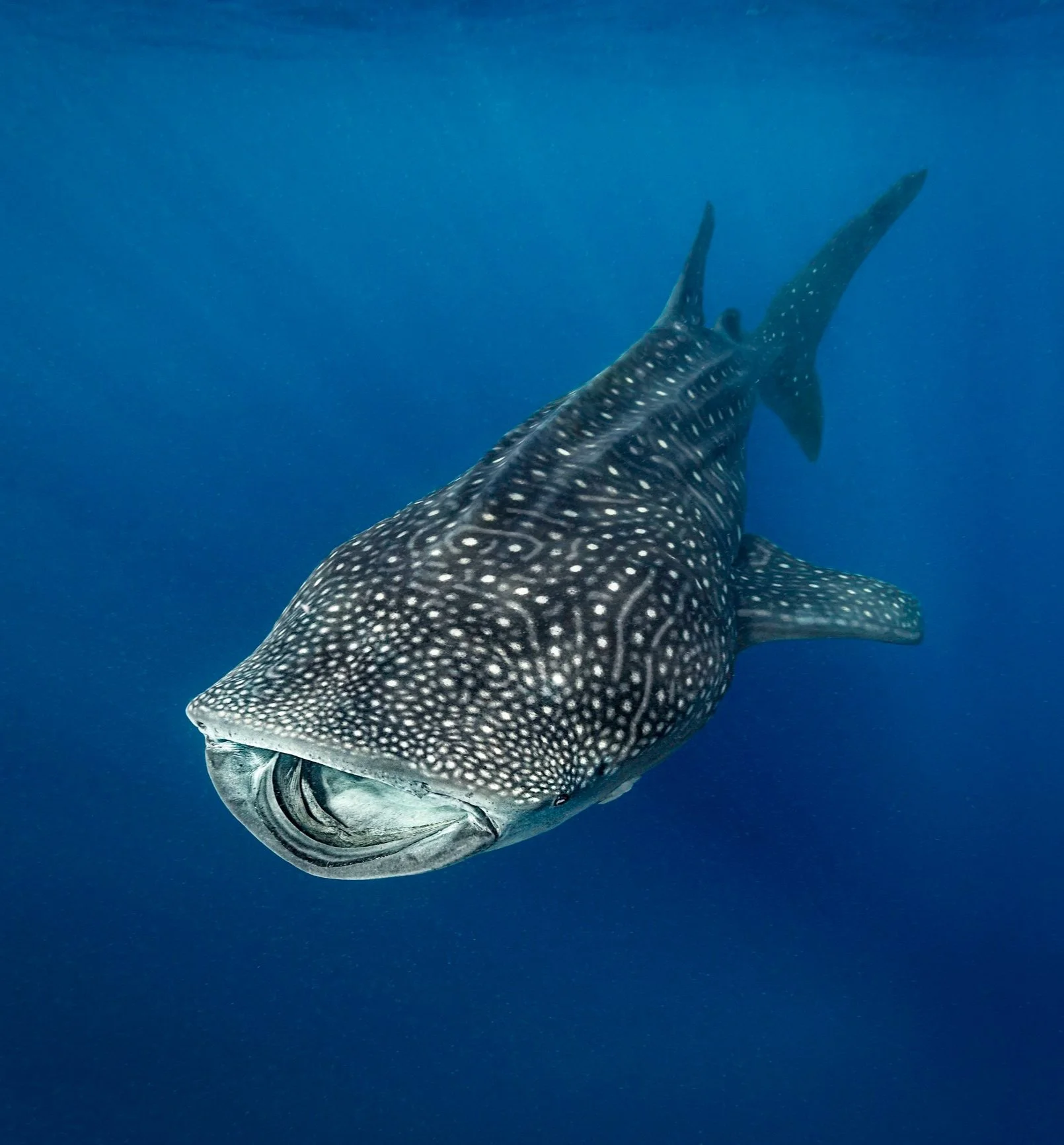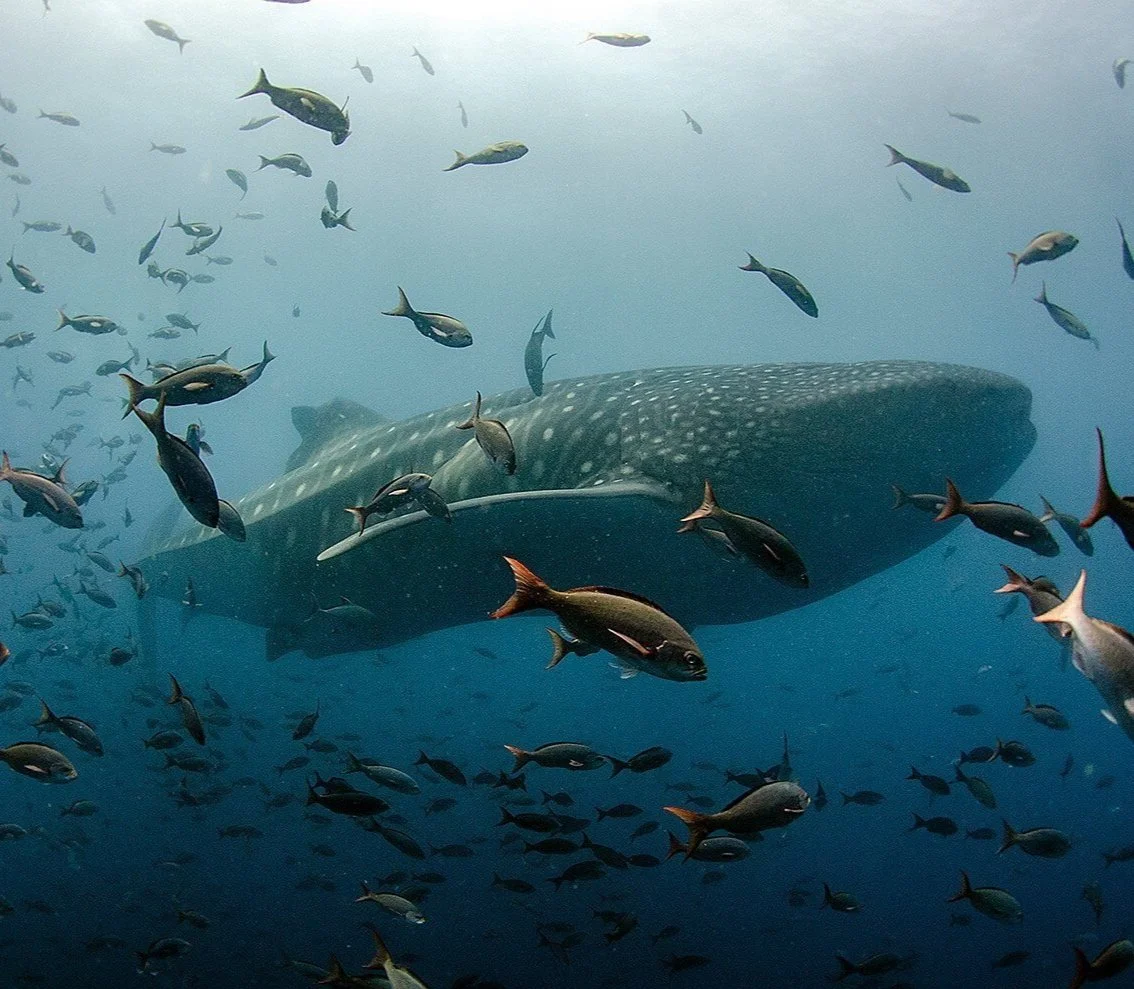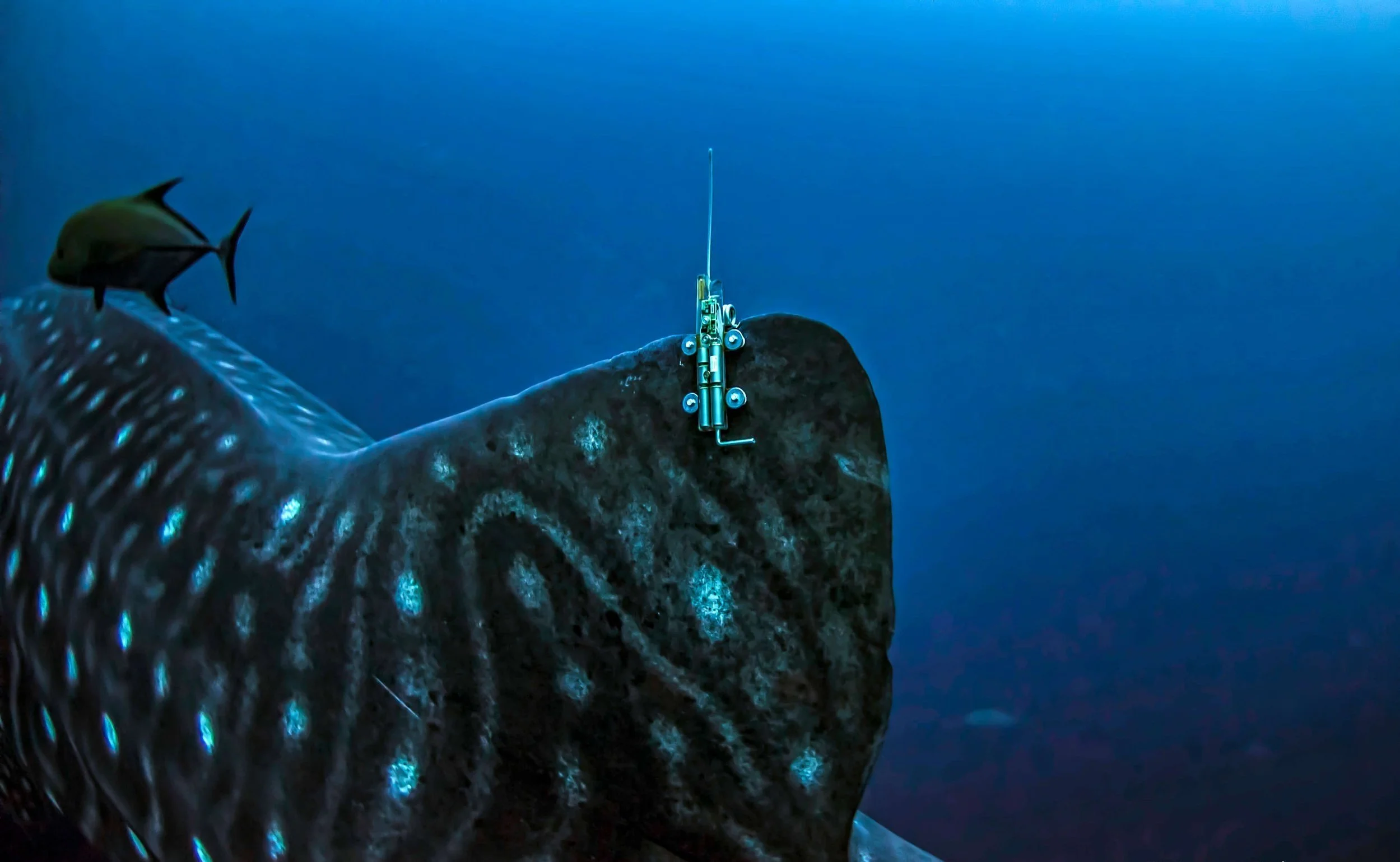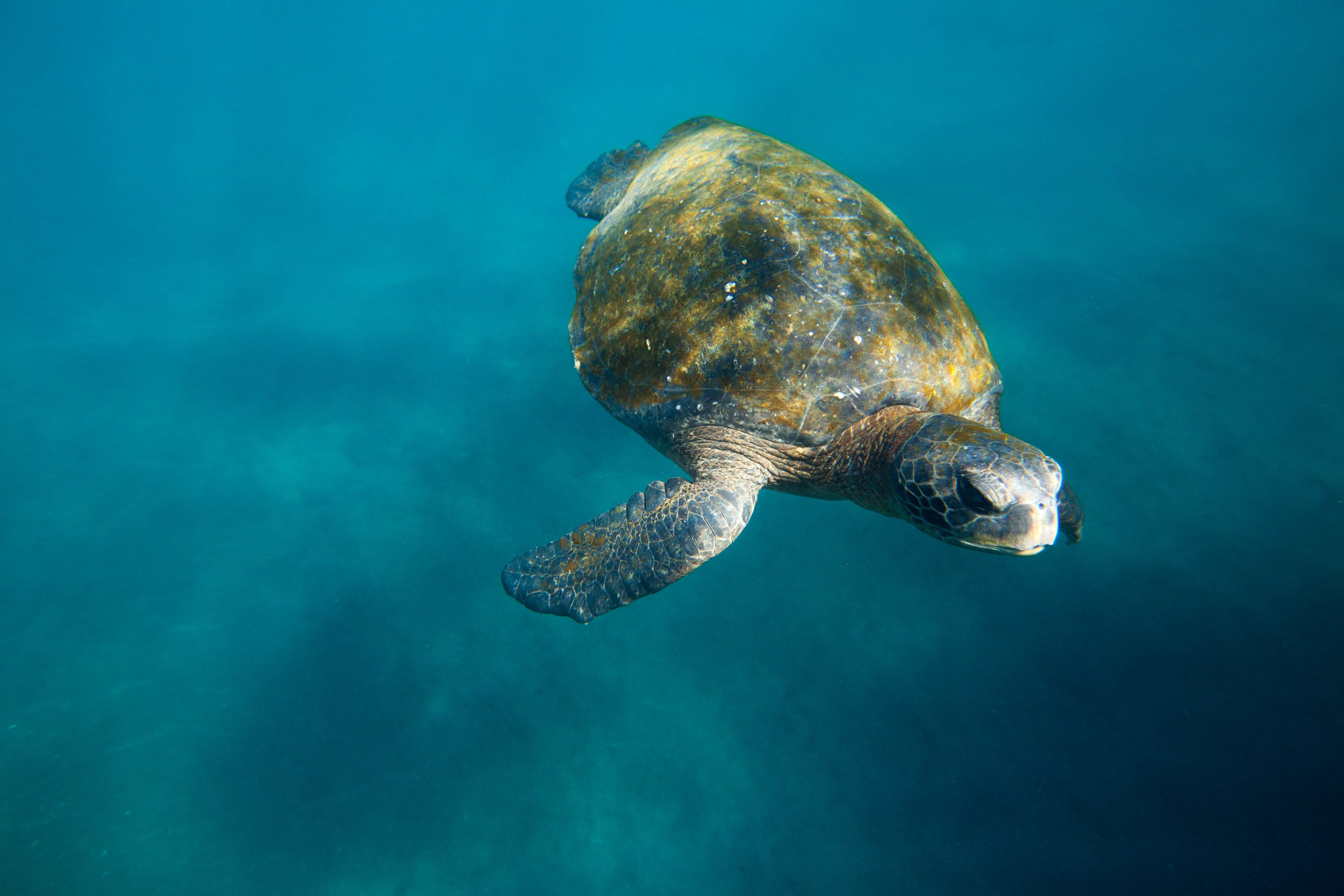
Blog
Good News: Whale Sharks in the Galapagos
in Blog Posts
Groundbreaking Sightings of 12 New Whale Sharks
In a recent 15-day expedition to Darwin’s Arch, the Galapagos Whale Shark Project identified 12 new whale sharks within the Galapagos Marine Reserve (GMR).
The GMR is over 76,000 square miles of protected area, making it the second largest marine reserve in the world, and it is home to over 3000 species—and 12 new whale sharks!
Led by scientists and park rangers, the team identified and tagged a rare adult male whale shark—a significant discovery, as 99% of the sightings in the area have been female and, before this expedition, no male sharks had been tagged. Now scientists can better track the differences in migration patterns and habits of male and female whale sharks.
Not only did they finally get the chance to tag a male whale shark, but they also spotted a female that had last been recorded in the area 13 years ago. This sighting offers encouraging evidence that the animals are returning to this protected area long-term.
Seven of the sharks sighted were equipped with SPLASH satellite devices, which are fixed by clamps on their dorsal fins. These devices allow scientists to track the animals’ movements throughout the ocean, providing key data on their behavior and migration routes.
Why Whale Sharks Matter
Whale sharks are important to the Galapagos and larger conservation efforts for many reasons.
As a cornerstone of sustainable tourism, a single shark is able to generate over $2 million in revenue over their lifetime due to drawing visitors in the hope of spotting these unique gentle giants. Because communities and visitors benefit significantly from their presence, there are increased local and global efforts to protect their populations in the long-term.
They are also considered an Umbrella Species. “Umbrella Species” are significant in conservation, as their protection safeguards many species that share their habitats–when you protect one, you help protect them all. For whale sharks, protection efforts in these habitats also protect manta rays, sea turtles, smaller sharks, and many more marine animals.
Multi-talented Nutrient Distributors
As for their role in overall environmental health, they play a vital role in the ocean’s blue carbon system–a term referring to the carbon captured by the world’s coastal and ocean ecosystems. Through their deep dives and long migrations, they act almost as nutrients pollinators.
Their contribution to the blue carbon system is twofold. Through feeding in nutrient-rich waters, they ingest huge amounts of biomass every day, then they migrate and enrich otherwise nutrient-deficient waters as that food passes through their digestive system and into the open ocean—similarly to how migratory birds distribute seeds.
Their physical movement also plays a significant role in moving nutrients. By diving deep into mesopelagic and bathypelagic waters, they physically mix the water from the deep ocean and help bring nitrogen to the surface. This key nutrient stimulates the growth of phytoplankton.
An environmental powerhouse, phytoplankton sequesters between 30-50 billion metric tons of carbon every year and represents around 40% of all plant-based carbon sequestration. It also produces around 50% of Earth’s oxygen—so protecting and supporting whale shark and other marine megafauna populations not only ensures the survival of magnificent creatures, but it also helps combat the impact of greenhouse gasses.
What This Means for the Galapagos
Research expeditions and citizen science photo submissions have contributed to over 700 individual whale sharks recorded since 2001, signaling the Galapagos is both a healthy ecosystem for these largely mysterious creatures and a critical habitat for marine megafauna.
Through the efforts of many environmental protection projects like the Galapagos Whale Shark Project, the Galapagos Marine Reserve has proven to be an important sanctuary for endangered species and a key hub for researching the health and habits of many of the oceans most important inhabitants.
Each new sighting and discovery affirm both the importance and effectiveness of the scientific research and protection policy that goes into supporting these essential ecosystems.
Help Whale Shark Conservation
There are several ways to support efforts to protect these unique creatures. From simple donations to adopting or naming a whale shark (learn more here), as well as participating in responsible tourism and citizen science, you can contribute to their conservation from near or far.
Visit the Galapagos
Though whale shark sightings can’t be guaranteed, each of our visitors to the Galapagos contribute significantly to the protection of the entire park and marine reserve. Through the support of conservation projects and scientific research, guest education, and high environmental standards, each INCA expedition to the archipelago helps protect it that much more.















